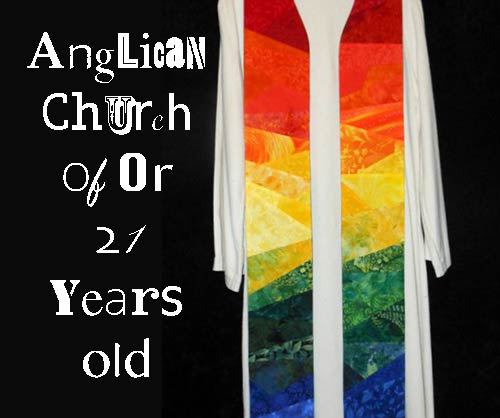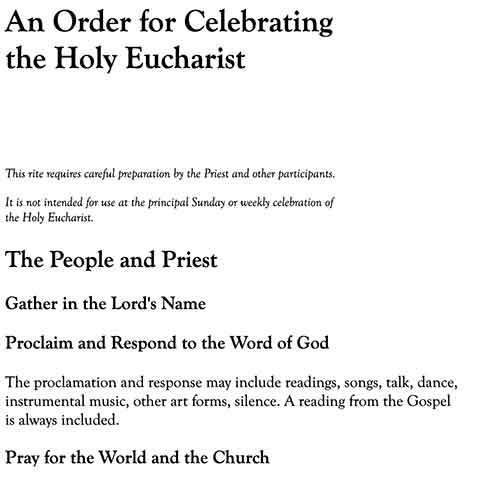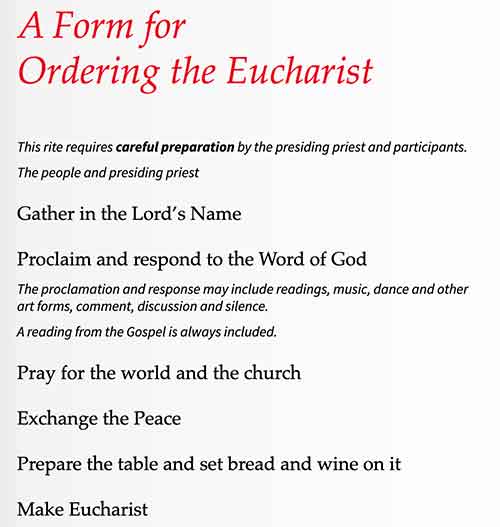
I have been involved in a lot of discussions recently for which I had to return to the text of A New Zealand Prayer Book He Karakia Mihinare o Aotearoa (NZPB/HKMA). What I kept noticing was how similar the 1989 Prayer Book was to other Anglican Prayer Books (and liturgies of other denominations). Sure, there are differences in the amount of gender-inclusive language used, or peripheral differences in details, or maybe sometimes a bit more flexibility (but often also less flexibility). Also, not everyone everywhere used the Prayer Book as given – but that, too, was not unknown elsewhere.
So, I asked myself: when was New Zealand’s The Anglican Church of Or formally born? [A church in which A or B or C or… are all possible to find, and in which alternatives are the norm in the agreements we vow to uphold – and when we can find what we have agreed to, there are a plethora of interpretations of what those agreements mean].
The answer I am suggesting is when a rubric was changed in A Form for Ordering the Eucharist. The 1989 NZPB/HKMA followed The Episcopal Church’s BCP An Order for Celebrating the Holy Eucharist and had a rubric agreeing that “It is intended for particular occasions and not fo the regular Sunday Celebration of the Eucharist.”

21 years ago the NZ Anglican Church removed the requirement from A Form for Ordering the Eucharist that “It is intended for particular occasions and not fo the regular Sunday Celebration of the Eucharist.” The first printed NZPB/HKMA that this line was omitted was the 2002 edition. A Form for Ordering the Eucharist is a bullet-point list of headings/elements that would make up a Eucharist. There are no fixed responses, etc. There is a framework for creating a Eucharistic Prayer. It was originally intended, for example, for a prayer group having an informal eucharist together on a weeknight.

Previously, at the regular Sunday Celebration of the Eucharist, a community could expect that one of a limited number of Eucharistic rites would be followed. Now that agreement had been formally removed, in a process in which people became very aware of this option, as every community had to vote on the removal of the limitation.
The Anglican Church of Or was formally born.
Once upon a time Anglicans in NZ had one Eucharistic Prayer, memorised responses, and a single lectionary. We called it “common prayer”, and it was all found in one book, for everyone – regardless of whether they were lay or ordained. Unsurprisingly, this was called The Book of Common Prayer.
Then, we had some revision. We had one new Eucharistic Prayer, and one old one. And two lectionaries. We still called it “common prayer”. Soon there were more Eucharistic Prayers, more lectionaries, and different responses. We still referred to it as “common prayer”.
But it was not enough. Then we purposely made our responses different. But we had a limited number of options. The year was 1989.
But it was still not enough. Now we could make up everything, or borrow it from anywhere, except for, in the Eucharistic Prayer, a few words were fixed.
But, in the last 21 years, even that was still not enough. Now we could make up everything, or borrow it from anywhere, and use Eucharistic Prayers from anywhere else, including other frameworks for making up our own ones.
But still it was not enough. We changed our Constitution so that bishops could authorise anything that still couldn’t be done. And still, with a wry grin, and a bit of a grimace, we call it “common prayer”.
And, astute readers will notice, I haven’t even mentioned A Template for Anglican Worship (come in; do something; leave), nor our culture of ignoring with impunity (at every level) whatever we agree about worship at the highest levels.
A Bespoke Culture
If that is the birth of The Anglican Church of Or, what is its conception, its parentage and ancestry?
NZ culture esteems the bespoke for all. There are no standard window sizes, no standard classrooms, no standard bathrooms; every kitchen, every house, every office space is individually designed. The same is true for NZ education – there is no curriculum content so that it is possible to say that what is taught to a third year student at school A will be the same as in school B around the corner. And should student X move from one school to another s/he might find that s/he repeats what has already been learnt, or ends their education with a surprising gap. A room can end up with shocking issues because it is as if this is the first time a room has ever been designed! I was recently in a brand new office where the person whose office it is had 5 different cooling machines in one small space as the architect had forgotten to put in means to cool the room!
And the same translates into NZ Anglican worship. I recently invited someone to a service I was leading (a person considering ordination), and the person asked what particular demographic the service would be directed to. My response: “To God.”
It is beyond a blog post to track the effect of the shift in clergy training and formation to a more bespoke approach, of Charismatic Renewal, of a generally historical low-to-middle-church approach to liturgy, of a reduction in liturgical knowledge and expertise required for ordination,…
Common Prayer is our incorporation and transformation into the Life of God – all God’s variety gathered in unity around one table. Bespoke worship (in The Anglican Church of Or), shaped to meet what I perceive to be my needs, inevitably leads to small communities of similar people.
image source – adapted


